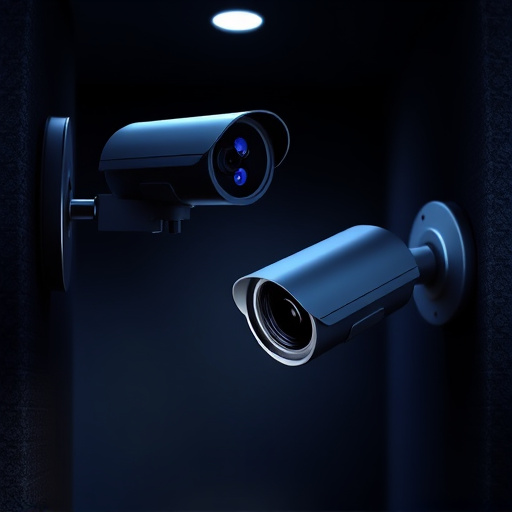Small spy cameras with audio have evolved into powerful tools for law enforcement, offering enhanced surveillance and evidence gathering through high-resolution video and clear audio. While these devices improve public safety in crowded areas and aid crime prevention, they also raise significant legal and privacy concerns regarding individual rights in democratic societies. To navigate these challenges, strict regulations are needed, focusing on deployment guidelines, consent mechanisms, data protection, and transparent reporting to maintain public trust and uphold legal standards in the digital age.
“Unveiling the capabilities of small spy cameras with audio, this comprehensive article explores their technical intricacies, legal dimensions, and profound impact on law enforcement. From a technical perspective, these miniature devices offer advanced recording solutions, enhancing evidence gathering. However, they raise significant privacy concerns necessitating careful consideration under the law. We delve into practical applications, from crime scene documentation to community policing, and examine ethical dilemmas associated with body-worn technology, shaping the future of law enforcement practices.”
Understanding Small Spy Cameras with Audio: A Technical Perspective
Small spy cameras with audio have evolved into sophisticated, compact devices capable of capturing high-resolution video and clear audio in a variety of environments. From their technical standpoint, these miniature cameras often employ advanced sensors and microphones designed to operate discreetly while delivering reliable performance. Their small size allows them to be easily hidden, making them valuable tools for surveillance and investigation purposes.
The integration of audio functionality enhances the capabilities of these devices significantly. High-fidelity sound recording enables law enforcement agencies to gather crucial evidence, such as voices, conversations, and ambient sounds, which can be invaluable in solving crimes. Additionally, many small spy cameras with audio come equipped with night vision capabilities, further expanding their utility in low-light conditions.
Legal Considerations and Privacy Concerns for Law Enforcement Audio Cameras
The implementation of small spy cameras with audio capabilities in law enforcement has raised significant legal and privacy considerations. As technology advances, these tiny devices offer unprecedented opportunities for surveillance, but they also spark debates about individual rights and civil liberties. One of the primary concerns is the potential invasion of privacy, as officers equipped with such cameras could capture intimate conversations and personal interactions without explicit consent. This issue is particularly sensitive in democratic societies that value privacy as a fundamental right.
Legal frameworks must adapt to address these challenges, striking a delicate balance between public safety and private citizens’ expectations of privacy. The use of audio-enabled cameras should be strictly regulated, with clear guidelines on when and where they can be deployed. Consent mechanisms, data protection protocols, and transparent reporting are essential to mitigating the risks associated with this technology. Ensuring that law enforcement agencies adhere to these measures is crucial to maintaining public trust and upholding legal standards in a digital age.
Practical Applications of Audio-Enabled Cameras in Law Enforcement
Law enforcement agencies have increasingly adopted small spy cameras with audio capabilities as a powerful tool for public safety and crime prevention. These compact devices offer numerous practical applications, enhancing officers’ ability to gather evidence, document incidents, and ensure accountability. With their discreet nature, these audio-enabled cameras can be strategically placed in high-risk areas, such as crowded gatherings, potential crime scenes, or places where civil unrest might occur. This allows for real-time monitoring, providing crucial intelligence on criminal activities, gang presence, or any suspicious behavior.
Moreover, the audio component enables officers to capture vital information that visual footage alone might miss. It helps in identifying individuals, understanding conversations, and recognizing potential threats. During investigations, these recordings can serve as valuable evidence, assisting in building cases and ensuring accurate reporting of incidents. The versatility of small spy cameras with audio capabilities has proven to be a game-changer for law enforcement, offering a discrete yet powerful means to maintain order and protect communities.
Ethical Dilemmas and Future Implications for Body-Worn Technology
The integration of small spy cameras with audio functionality into law enforcement practices raises several ethical dilemmas that must be carefully navigated. While these devices offer enhanced situational awareness and evidence capture capabilities, they also pose significant privacy concerns. The ability to secretly record conversations and personal interactions could infringe on civil liberties, especially if not used judiciously. Balancing public safety and individual freedom requires clear guidelines and oversight to prevent abuse or misuse of this technology.
Looking ahead, the future implications of body-worn audio cameras extend beyond law enforcement agencies. As these devices become more sophisticated, they might find their way into civilian hands, blurring the lines between surveillance and personal privacy. This raises questions about data security, consent, and the potential for widespread surveillance culture. Addressing these challenges will be crucial to ensure that technological advancements in small spy cameras with audio capabilities are harnessed responsibly, upholding democratic values while leveraging innovative tools.
